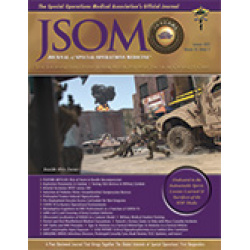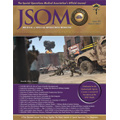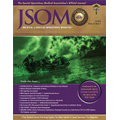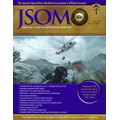Descriptive Analysis of Combat-Associated Aspiration Pneumonia
Schauer SG, Damrow T, Martin SM, Hudson IL, De Lorenzo RA, Blackburn MB, Hofmann LJ, April MD 23(2). 19 (Journal Article)
Background: Airway obstruction is the second leading cause of potentially preventable death on the battlefield. The treatment for airway obstruction is intubation or advanced airway adjunct, which has a known risk of aspiration. We sought to describe the variables associated with aspiration pneumonia after prehospital airway intervention. Methods: This is a sub-analysis of previously described data from the Department of Defense Trauma Registry (DoDTR) from 2007 to 2020. We included casualties that had at least one prehospital airway intervention with documentation of subsequent aspiration pneumonia or pneumonia within three days of the intervention. We used a generalized linear model with Firth bias estimates to test for associations. Results: There were 1,509 casualties that underwent prehospital airway device placement. Of these, 41 (2.7%) met inclusion criteria into the aspiration pneumonia cohort. The demographics had no statistical difference between the groups. The non-aspiration cohort had fewer median ventilator days (2 versus 6, p < 0.001), intensive care unit days (2 versus 7, p < 0.001, and hospital days [3 versus 8, p < 0.001]). Survival was lower in the non-aspiration cohort (74.2% versus 90.2%, p = 0.017). The administration of succinylcholine was higher in the non-aspiration cohort (28.0% versus 12.2%, p = 0.031). In our multivariable model, only the administration of succinylcholine was significant and was associated with lower probability of aspiration pneumonia (odds ratio 0.56). Conclusion: Overall, the incidence of aspiration pneumonia was low in our cohort. The administration of succinylcholine was associated with a lower odds of developing aspiration pneumonia.


 Español
Español 






